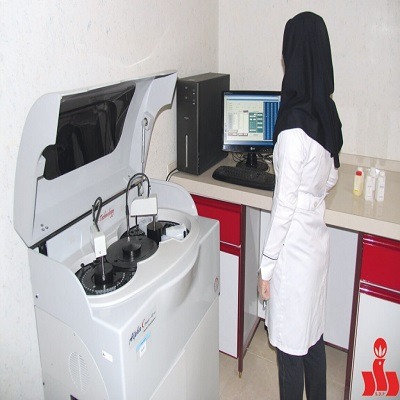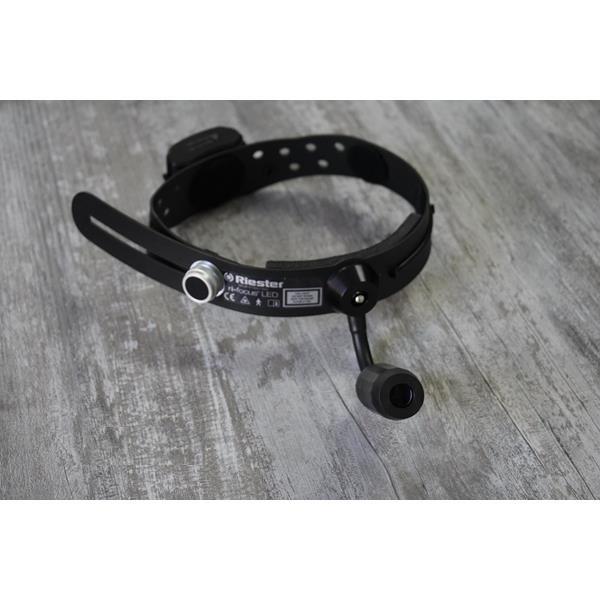اتوآنـالایــــزر
دستگاه اتوآنالایزر ، ترکیب های شیمیایی خون را اندازه گرفته و روی نمودار ، نمایش می دهد. این کار به
وسیله ی مخلوط کردن ، واکنش معرف و اندازه گیری رنگ سنجی در حضور جریان مداوم انجام می شود.
اساس کار دستگـــاه
اساس سنجش های این دستگاه روش اسپکتروفتومتری است بدین ترتیب که پس از جداسازی سرم خون،
معرف مورد نظر( یک محلول مشخص تحت عنوان معرف ) به سرم اضافه می شود و ترکیب نهایی به رنگ خاص
در می آید.
با توجه به قانون بییر مبنی جذب انتخابی نور توسط مواد مختلف، نوری با رنگ مکمل رنگ ترکیب نهایی را از آن
عبور داده و میزان جذب نور را اندازه گیری می کند سپس آن را با میزان جذب نور استاندارد مقایسه و به آن
مقدار ترکیب مورد نظر را با عدد اعلام می کند.
اتوآنالایزر دستگاه آزمایشی است که با تمرین دخالت آزمایشگر مواد شیمیایی مختلف را در چندین نمـــــــونه
بیولوژیکی اندازه گیری می کنـــــد.
انواع اتوآنالایزر
-
اتوآنالایـــزر Batch
اتوآنالایزر بچ در هر بار استفاده یک آزمایش از نمونه های چیده شده انجـــام می دهد.
-
اتوآنالایزر multi batch
اتوآنالایزر مولتی بچ آزمایشات برنامه ریزی شده را به ترتیب آزمایش انجـــام می دهـد.
-
اتوآنالایزر Random access
اتوآنالایزر راندوم آزمایشات برنامـــــــه ریزی شده را به ترتیب نمونه انجــــام می دهـد.

اتوآنالایزر
قسمتهای دستگاه
قسمتهای مختلف این سیستم را که در تمام دستگاه مشترک است به قرار زیر است :
-
نمونه گیر : این بخش، نمونهها، استانداردها و محلولهای شسته شده را به سیستم اتوآنالایزر، آسپره میکند.
-
پمپ متناسب کننده و لوله چند سوراخه :نمونهها را با معرفها، مخلوط میکند. همچنین مایعات را به نسبتهای دقیق به ماژولهای دیگر پمپ میکند.
-
دیالیز کننده : یک غشاء نیمه تراوا است که امکان عبور انتخابی، مواد را فراهم میآورد.
-
حمام داغ :مایعات را به صورت مداوم در درجه حرارت مورد نظر جهت پیشرفت رنگ، نگه میدارد.
-
رنگ سنج :تغییرات در چگالی نوری جریان مایعی را که در یک لوله جاری میشود مانیتور میکند. شدتهای رنگ (چگالی نوری) که متناسب با غلظت مادهاست، به ولتاژ الکتریکی تبدیل میشود.
-
ثبات :سیگنال الکتریکی، چگالی نوری از یک رنگ سنج به یک نمایشگر گرافیکی روی یک چارت متحرک تبدیل میکند.
نگهداری
نگهداری اتوآنالایز، شامل تنظیم کالیبراسیون مداوم است. بیشتر مشکلات، مکانیکی (لولهها، قسمتهای
پمپ متحرک) و الکتریکی (موتورها و سوئیچها) است. ایرادهای الکتریکی اندک است. سرویس و تعمیر این
پیچیده و مستلزم گذراندن دورههای تعمیر و نگهداری است.
v مزاياي به کارگيري اين سيستم ها در آزمايشگاه عبارتند از:
1) افزايش سرعت و حجم کاري
2) کاهش خطاهاي انساني
3) افزايش دقت و صحت نتايج
4) صرفه جويي در مصرف نمونه و معرف ها
5) دقت در تکرار آزمايش (تکرار پذير بودن آزمايش)
6) کاهش هزينه هاي جانبي و کاهش پرسنل در آزمايشگاه
v تقسيم بندي اتوآنالايزرهاي بيوشيمي براساس روش قرائت تست ها
-
Batch Analyzer
در ايناتوآنالايزر قرائت به صورت تست به تست انجام شده و نتايج نيز به همين صورت نشان داده مي شود.
سرعت قرائت تست ها در اين نوع آنالايزرها بين ۴۰ الي ۸۰ تست در ساعت است.
-
Multibatch Analyzer
در ايناتوآنالايزرها قرائت در حالت عادي به صورت تست به تست انجام مي شود، ولي امکان تعريف اجراي چند
تست مختلف براي يک نمونه و به صورت متوالي نيز وجود دارد که در اين صورت بايد از قسمت اورژانس يا
برنامه Stat دستگاه استفاده کرد. همچنين در اين اتوآنالايزرها دستيابي به نتايج به هردو صورت يعني تست به
تست يا بيمار به بيمار امکان پذير است. سرعت اين اتوآنالايزرها معمولا بين ۸۰ الي ۲۴۰ تست در ساعت
است.
-
Random Access Analyzer
در ايناتوآنالايزرها مي توان در هر زمان و براي نمونه، تست مورد نظر را انتخاب و اجرا کرد. حال آنکه رعايت هيچ
گونه ترتيبي اجباري نيست. سرعت اين اتوآنالايزرها بين ۱۰۰ الي ۶۰۰ تست در ساعت است.

اتوآنالایزر

